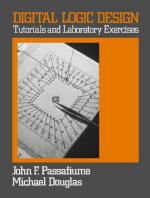|
This section contains 1,502 words (approx. 6 pages at 300 words per page) |

|
Computers, and other digital systems, are designed using elementary electronic circuits called gates. In this article, Inverters, Or gates, and And gates are introduced by logical statements justifying the term "logic design." Then, the design procedure is illustrated, and integrated circuits are discussed.
Gates
Gates are used to regulate electronic flow and to construct devices to process data, as well as to build memory devices. There are three fundamental gates—"And," "Or," and "Not"—as well as some "hybrid" gates such as "Nand" (Not-And) and "Nor" (Not-Or).
Not
Consider the logical statement: "The porch light is on (Z 1) when I am not home (A 0)." Z is the output; A is the input (I am home). A corresponding binary function, of one variable, which is also binary, is called "Complement" or "Not." "Not" is represented by "Z ~A" and its behavior is:
| A | Not-A... |
|
This section contains 1,502 words (approx. 6 pages at 300 words per page) |

|


